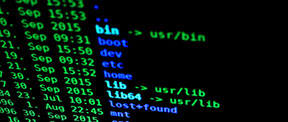# deltree: A Versatile Command for Recursively Deleting Directories and Files in Linux
## Introduction
In the vast world of Linux commands, there exists a treasure trove of hidden gems that can greatly enhance your productivity and efficiency. One such command is `deltree`, a powerful tool for recursively deleting directories and files. While its name may not be as familiar as other commands like `rm` or `find`, `deltree` offers unique capabilities and a distinct set of use cases. This blog post aims to introduce you to `deltree`, explore its features, and provide practical examples of how you can utilize this command in various scenarios.
## Features of deltree
* **Recursive Directory Deletion:** The primary strength of `deltree` lies in its ability to recursively descend into directories and delete their contents, including subdirectories and files. This feature makes it an invaluable tool for cleaning up large directory structures or removing stubborn directories that resist deletion due to nested files or permissions issues.
* **Forceful Deletion:** `deltree` comes equipped with a `-f` or `–force` option that allows you to bypass permission checks and forcibly delete directories and files, even if they are protected or have restricted permissions. This option is particularly useful when dealing with directories that contain files locked by other processes or have complex permissions settings.
* **Silent Operation:** Unlike some other deletion commands, `deltree` operates silently by default, meaning it does not produce any output or confirmation messages during the deletion process. This behavior can be advantageous when you need to quickly and quietly remove a large number of files and directories without being prompted for confirmation.
## Practical Examples of Using deltree
1. **Bulk Directory Removal:**
“`
deltree ~/old_projects
“`
This command recursively deletes the `old_projects` directory and all its contents, including subdirectories and files.
2. **Deleting Stubborn Directories:**
“`
deltree -f /var/log/old_logs
“`
Using the `-f` option, this command forcibly deletes the `old_logs` directory and its contents, even if some files or subdirectories have restricted permissions or are locked by other processes.
3. **Selective File Deletion:**
“`
deltree -d 3 ~/downloads/*.iso
“`
This command recursively searches for ISO files in the `~/downloads` directory and deletes only those files that are three or more levels deep within subdirectories. The `-d` option specifies the depth of subdirectories to search.
4. **Purging Temporary Files:**
“`
deltree -r /tmp/*
“`
This command recursively deletes all files and subdirectories within the `/tmp` directory, which is commonly used for storing temporary files. The `-r` or `–remove-top` option ensures that the `tmp` directory itself is also removed.
5. **Cleaning Up Old Backups:**
“`
find /backups -type d -mtime +7 -exec deltree -r {} \;
“`
This command combines `find` and `deltree` to locate and delete backup directories that are older than seven days. The `-exec` option allows you to execute `deltree` on each matching directory found by `find`.
## Conclusion
`deltree` is a powerful and versatile command that offers a convenient and efficient way to recursively delete directories and files in Linux. With its features like recursive deletion, forceful deletion, and silent operation, `deltree` can handle a wide range of use cases, from bulk directory removal to deleting stubborn directories and cleaning up temporary files. By incorporating `deltree` into your Linux toolkit, you can streamline your file management tasks and improve your productivity.
